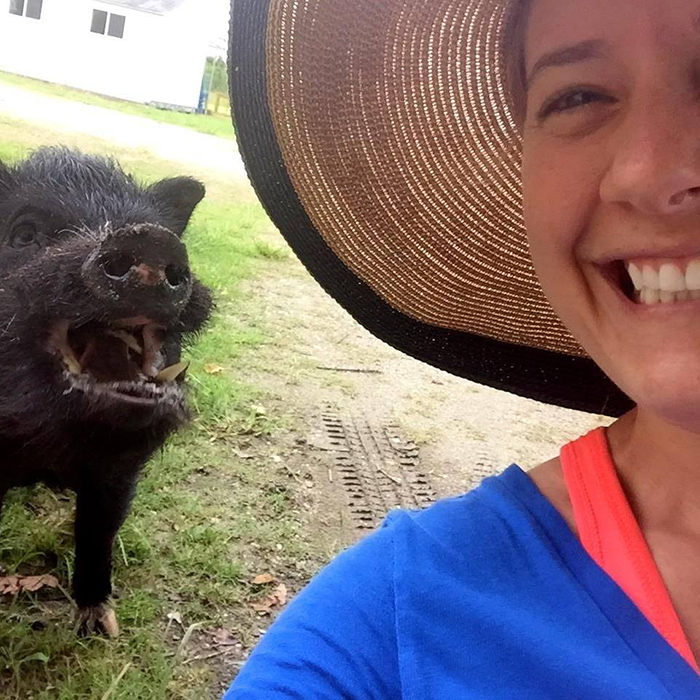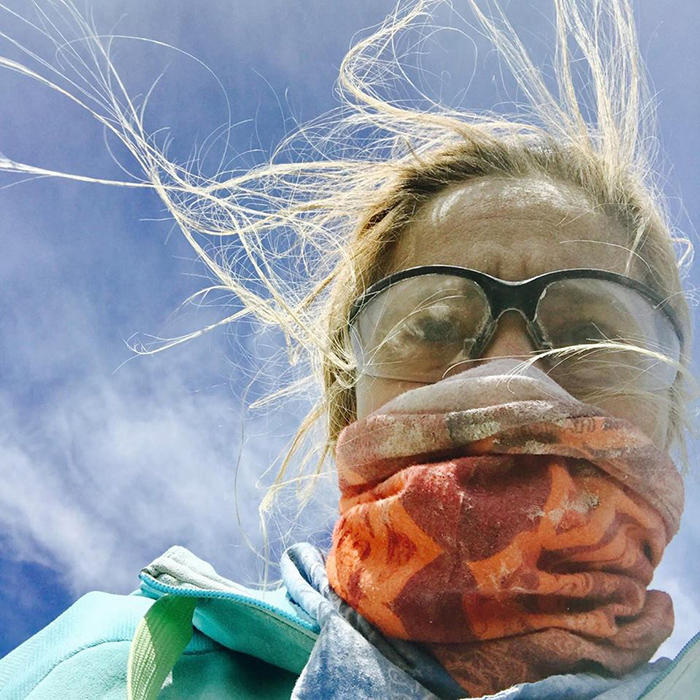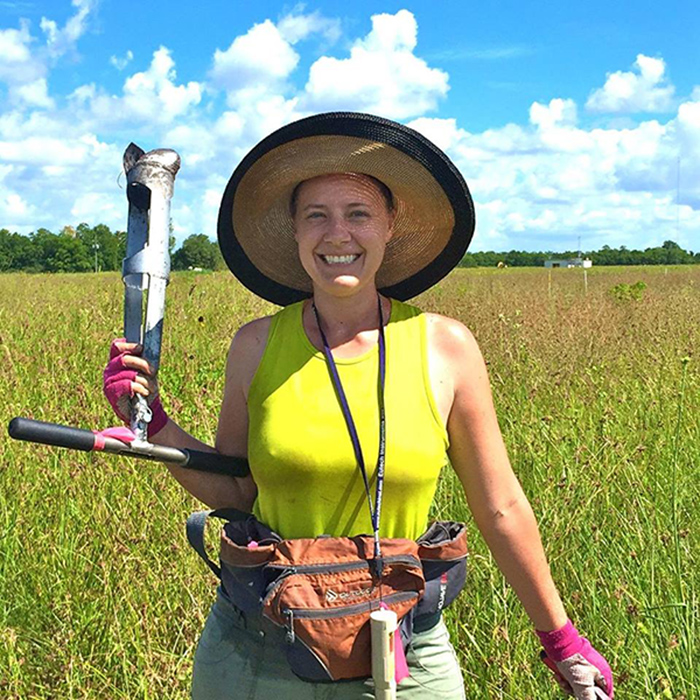College of Arts and Sciences Newsroom

Controlling Insect Communities
University of Dayton insect ecologist Chelse Prather is "rewriting the textbook" about the role certain minerals might play in controlling grasshopper and other insect populations under a $346,500 National Science Foundation grant.
Prather, assistant professor of biology, is working with four students this summer to manipulate soil nutrients on a massive scale in a coastal tallgrass prairie south of Houston, Texas, to test their importance in determining grasshopper density and diversity.
Grasshoppers are an important part of grassland ecosystems, eating plants and serving as fodder for other animals. But they also compete with livestock for food and in large populations can cause millions of dollars of damage to pastures and rangeland. Ranchers and farmers spend nearly $1 billion annually to control grasshoppers in these areas, but still can't predict their numbers year-to-year.
"This type of information could actually help us predict outbreaks better and has lots of implications for how we manage these systems," Prather said.
Nitrogen and phosphorus are essential elements for plant and animal growth, but these "macronutrients" are now abundant in most soil because of their prevalence in fertilizer. Prather is studying whether less common "micronutrients" such as calcium, potassium and sodium might help determine the structure of grasshopper communities.
In the laboratory, Prather discovered grasshoppers can detect the amount of calcium in blades of grass and actually choose to eat ones with specific levels of these micronutrients. In the field, she found a correlation between the level of micronutrients in plants and the number of grasshoppers in that area.
Under the National Science Foundation grant, Prather is testing her hypothesis using every combination of nitrogen, phosphorus, calcium, potassium and sodium across nearly 29 acres at the University of Houston Coastal Center. For the second year, she and her students spread 10 tons of fertilizer in 128 10,000-square-foot plots, replicating each treatment eight times.
Last summer, Prather saw vast differences in the plant communities in the various plots. Insects also started to respond to the micronutrients — particularly grasshoppers, which responded strongly to calcium and sodium.
"People didn't think that animals like insects were limited by micronutrients, so this is groundbreaking, rewriting the textbook kind of stuff," she said. "It's also showing us that dumping all this nitrogen and phosphorus on the ground has significant effects for how ecosystems function — in particular these grasslands."
Prather hopes her tests will show whether adding large amounts of nitrogen and phosphorus fertilizer to soil has resulted in plants and animals responding differently to other nutrients.
In addition to her micronutrient work, she is also researching whether grasshopper diversity affects how grasslands function under a $150,000 grant from the U.S. Department of Agriculture in collaboration with University of Houston research assistant professor Angela Laws.
Prather's students are assisting with the micronutrient research and will also work on their own independent projects during their 12 weeks in Texas.
"We are going plot to plot testing grasshopper density, sweep-netting insects and looking at grasshopper diversity," said Kiersten Angelos, a senior biology major from Portsmouth, Ohio. Her own research project will study infection rates of root-colonizing fungi on little bluestem prairie grass in the plotted areas.
Kaitlin Gawkins, a junior biology major from Cincinnati, will do lab experiments to see if the grasshoppers are responding to micronutrients directly or indirectly due to changes in the plant community.
Doctoral student Ryan Reihart '14 is researching the impact of Rasberry crazy ants, an invasive species first documented at Prather’s field site in 2012. Reihart holds a bachelor's degree in environmental biology from the University of Dayton and a master's degree in biology from Eastern Washington University.
Shania Hurst, a senior environmental biology major from Fairfield, Ohio, will investigate whether the crazy ants are having a positive impact on aphids, another insect species.
"I am learning how to run my own experiment and it is giving me exposure to field work in the career path I wish to pursue," Hurst said. She is participating as part of the College of Arts and Sciences Dean's Summer Fellowship program, which provides undergraduate students with high-impact experiential learning opportunities and is supported by the Dean's Fund for Excellence.
The students will write papers, create posters and present their research at the 2018 Brother Joseph W. Stander Symposium, the University's annual showcase of students' academic achievements.
Prather plans to submit academic journal articles based on her research.
"I think this project will hopefully produce a lot of papers," she said. "We're getting results that are the most exciting of my career."
- Dave Larsen, communication coordinator, College of Arts and Sciences
Sweep netting insects in micronutrients plots



